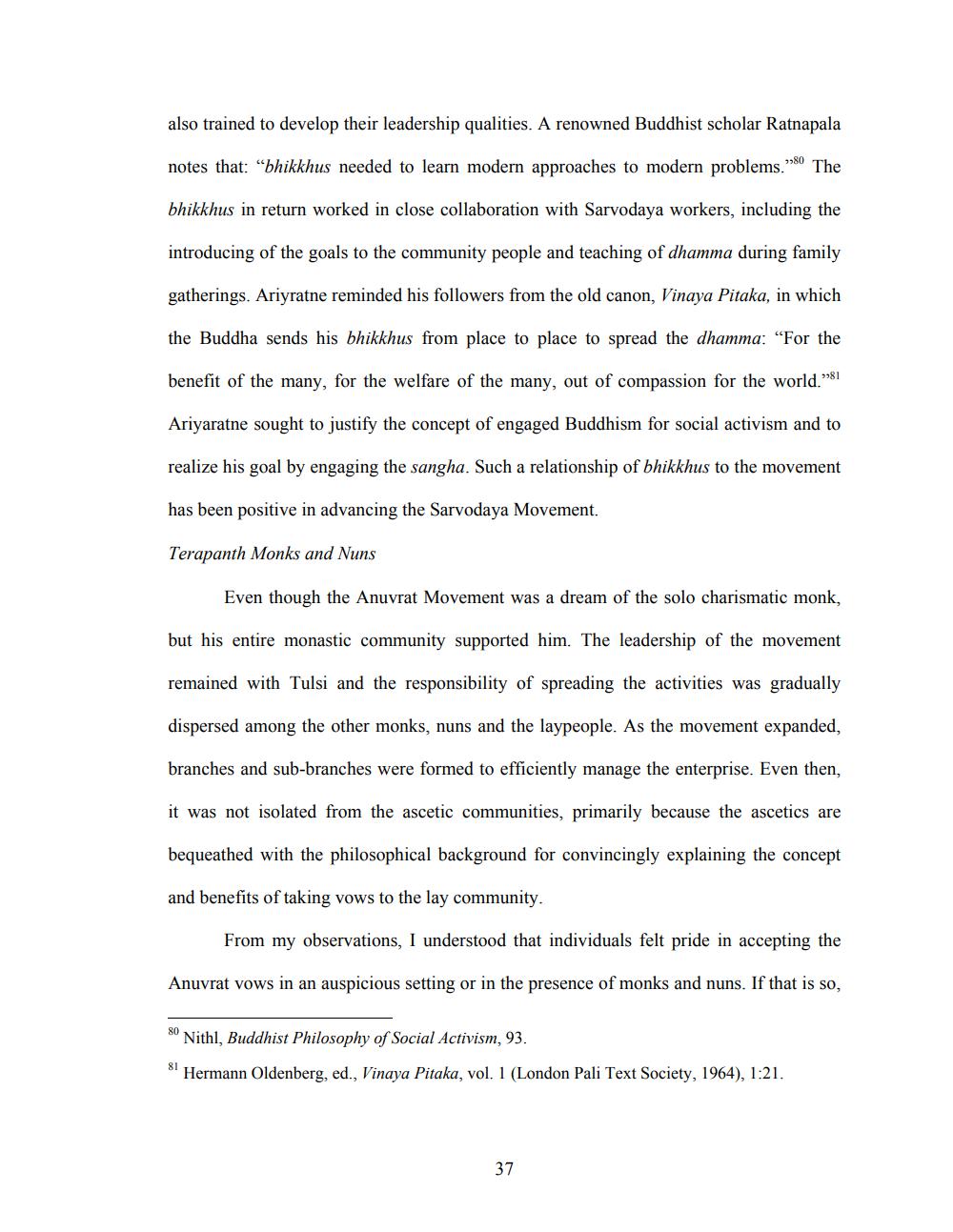________________
also trained to develop their leadership qualities. A renowned Buddhist scholar Ratnapala
notes that: "bhikkhus needed to learn modern approaches to modern problems."80 The
bhikkhus in return worked in close collaboration with Sarvodaya workers, including the
introducing of the goals to the community people and teaching of dhamma during family
gatherings. Ariyratne reminded his followers from the old canon, Vinaya Pitaka, in which
the Buddha sends his bhikkhus from place to place to spread the dhamma: "For the
benefit of the many, for the welfare of the many, out of compassion for the world."981
Ariyaratne sought to justify the concept of engaged Buddhism for social activism and to
realize his goal by engaging the sangha. Such a relationship of bhikkhus to the movement
has been positive in advancing the Sarvodaya Movement.
Terapanth Monks and Nuns
Even though the Anuvrat Movement was a dream of the solo charismatic monk,
but his entire monastic community supported him. The leadership of the movement
remained with Tulsi and the responsibility of spreading the activities was gradually
dispersed among the other monks, nuns and the laypeople. As the movement expanded,
branches and sub-branches were formed to efficiently manage the enterprise. Even then,
it was not isolated from the ascetic communities, primarily because the ascetics are
bequeathed with the philosophical background for convincingly explaining the concept
and benefits of taking vows to the lay community.
From my observations, I understood that individuals felt pride in accepting the
Anuvrat vows in an auspicious setting or in the presence of monks and nuns. If that is so,
* Nithl, Buddhist Philosophy of Social Activism, 93.
sl Hermann Oldenberg, ed., Vinaya Pitaka, vol. 1 (London Pali Text Society, 1964), 1:21,
37




